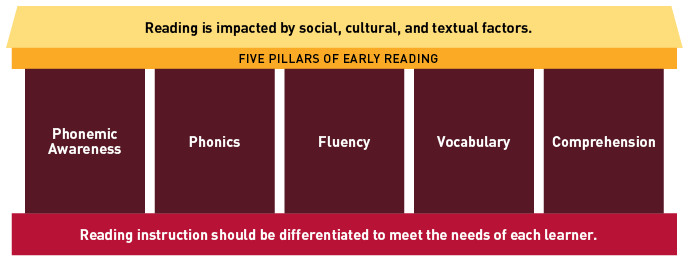Teacher preparation for reading instruction
The University of Minnesota, Twin Cities is committed to preparing teachers who understand and can apply research-backed teaching methodologies that will help all students become proficient readers.
Our licensure programs fully prepare teachers to address the five pillars named in the National Reading Panel report and supported by the science of reading. In addition, we prepare teachers who center reading instruction around the individual needs of their students, acknowledging that cultural background, linguistic diversity, and lived experience impact the way children become literate.
Five pillars of early reading
Reading is impacted by social, cultural, and textual factors.
Phonemic awareness | Phonics | Fluency | Vocabulary | Comprehension
Reading instruction should be differentiated to meet the needs of each learner.
Teachers of developing readers prepared at the University of Minnesota, Twin Cities:
- Know how to develop students’ phonological and phonemic awareness
- Use phonics and other purposeful strategies to help students learn to decode and encode text
- Fully meet the Minnesota State Standards for Teacher Preparation in Reading
- Apply evidence-based instructional strategies in early literacy classrooms
- Know how to support the reading development of multilingual learners
- Identify the characteristics of and methods to address dyslexia
- Use assessment data to inform and differentiate reading instruction
For more detailed information about Teacher Preparation in Reading at the University of Minnesota please see the CEHD Office of Teacher Education’s FAQ.
National Reading Panel. (2000) Report of the National Reading Panel--Teaching children to read: An evidence-based assessment of the scientific research literature on reading and its implications for reading instruction. National Institute of Child Health and Human Development.
